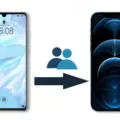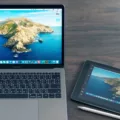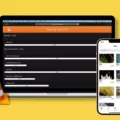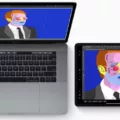Are you looking for an efficient way to transfer data from your Mac to your iPad? If so, you’re in the right place! In this blog post, we’ll take a look at the different methods available for transferring data between a Mac and an iPad.
One of the most popular ways to transfer data from Mac to iPad is using Apple’s own File Sharing feature. This is a feature that was introduced with macOS High Sierra and allows users to easily move files between their Mac and their iOS devices. All you have to do is connect your iPad to your Mac with a USB cable, launch the Finder app, select your device from the sidebar, then click “File Sharing”. From here, you can select which app on your iPad will receive the file(s) you want to transfer. After that, all you have to do is click “Sync” and the file(s) will be transferred over.
Another option for transferring data from Mac to iPad is via iCloud Drive. This requires signing in with the same Apple ID on both devices and then turning on iCloud Drive on both devices. Once this process is complete, simply open up the “Files” app on your iPad, click “Browse > iCloud Drive” and all of the files/folders stored in iCloud Drive should appear in this view. Anything stored here can then be accessed directly on your iPad without having to manually transfer it over first.
Finally, if you have an Apple Pencil or other compatible stylus, you can use Sidecar to wirelessly transfer content back and forth between a Mac and an iPad. To do this, simply choose “System Settings > Displays” from your Mac menu bar (or open Control Center), then select your iPad from the list of available displays. You can then drag files/folders straight from Finder into any compatible apps running on both devices for easy wireless transfers.
In conclusion, there are several ways available for transferring data between a Mac and an iPad – some more efficient than others depending on what type of content you need to move around! If you ever need help with any of these processes or have any further questions about them feel free to reach out!
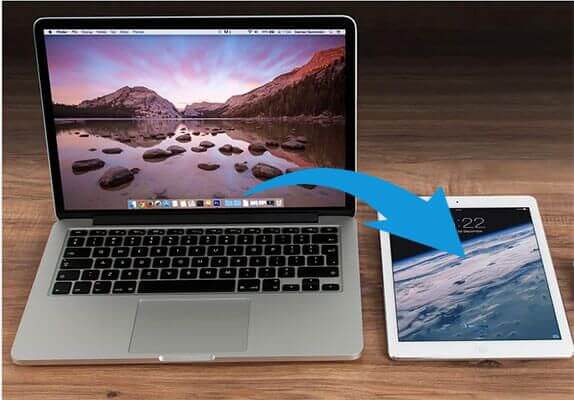
Transferring Data From a Laptop to an iPad
Transferring data from your laptop to an iPad is a simple process. First, connect your laptop and iPad with a USB cable. Then, open iTunes on your laptop and select the ‘device’ icon in the upper-left corner of the window. Next, select ‘File Sharing’ from the left side of the window and choose the app you wish to transfer data. You can then drag and drop files from your laptop into the app on iTunes. Finally, click ‘Sync’ to transfer all of your data to your iPad.
Transferring Files From Mac To iPad Using Cable
To transfer files from Mac to iPad using a cable, start by connecting your iPad to your Mac with the USB cable that came with it. Open Finder on your Mac and click on the device icon that corresponds to your iPad. You should then see a list of available apps for transferring files. Select the app you’d like to use and you’ll be given the option to either drag and drop or copy and paste files from your Mac into the app on your iPad. Once complete, you can safely eject the device from Finder and use the transferred files on your iPad.
AirDropping from Mac to iPad
Yes, you can AirDrop from a Mac to an iPad! You can use AirDrop to quickly and securely wirelessly transfer documents, photos, map locations, webpages, and more from your Mac to your iPad. To do this, your Mac and iPad both need to have Bluetooth and Wi-Fi turned on. Your devices must also be close enough together so that they can communicate with each other. Once the devices are connected, simply click the “Share” button on the file or item on your Mac that you want to share with your iPad. A list of nearby devices will appear for you to select from. When you select your iPad from the list, the file will begin transferring wirelessly from your Mac to your iPad!
Troubleshooting Mac-iPad Pairing Issues
It is possible that your Mac and iPad are not compatible or there may be an issue with their Bluetooth connection. To troubleshoot, first make sure Bluetooth is on and discoverable on both devices. If you are still having trouble connecting, try restarting both devices and then attempting to pair them again. If you are still having difficulty, it may help to manually connect the two devices by going into the Bluetooth settings on your Mac and selecting your iPad from the list of available devices.
Connecting an iPad to a Mac
In order to get your Mac to recognize your iPad, you will need to enable the device recognition feature in the Finder settings. To do this, open the Finder on your Mac and select ‘Finder > Settings’. Under ‘Sidebar’, make sure that the ‘CDs, DVDs, and iOS Devices’ checkbox is selected. Once this is enabled you should be able to see your iPad in the sidebar below ‘Locations’. If you don’t see it there, try disconnecting and reconnecting the device from your Mac.
Transferring Files from Mac to iPad Without iCloud
To transfer files from Mac to iPad without using iCloud, you can set up a USB connection or Wi-Fi syncing. To connect via USB, make sure your iPad is unlocked and plugged into your Mac with a compatible cable. Then open the Finder on your Mac and select your iPad in the sidebar. You can then drag and drop any compatible files from your Mac onto your iPad.
To use Wi-Fi syncing, make sure both devices are connected to the same Wi-Fi network and that iTunes is installed on the Mac. On your iPad, go to the Settings app, tap General > iTunes Wi-Fi Sync, and select the Mac you want to sync with. Then open iTunes on the Mac, select your device in the sidebar, and click Sync. Once the sync is complete, compatible files will be transferred from your Mac to your iPad.
Transferring Files Wirelessly from Mac to iPad
Transferring files between your Mac and iPad wirelessly is simple with AirDrop. To begin, select the file you wish to transfer from either your Mac or iPad. On the device containing the file, tap or click the sharing options button (such as Share, AirDrop, etc.) and select your other device from the list that appears. Your devices should then automatically establish a connection and begin transferring the file within seconds.
Transferring Photos From Mac to iPad Without iTunes
You can transfer photos from Mac to iPad without iTunes by using AirDrop. To do so, enable AirDrop on your Mac by going to Finder > AirDrop and setting the option “Allow me to be discovered by” as Contacts Only or Everyone. Then turn on AirDrop on your iPad from the Control Center. Finally, locate the photos you want to transfer and drag them into the AirDrop window of your iPad. You will receive a notification when the transfer is complete, and you can access the photos in your Photos app.



